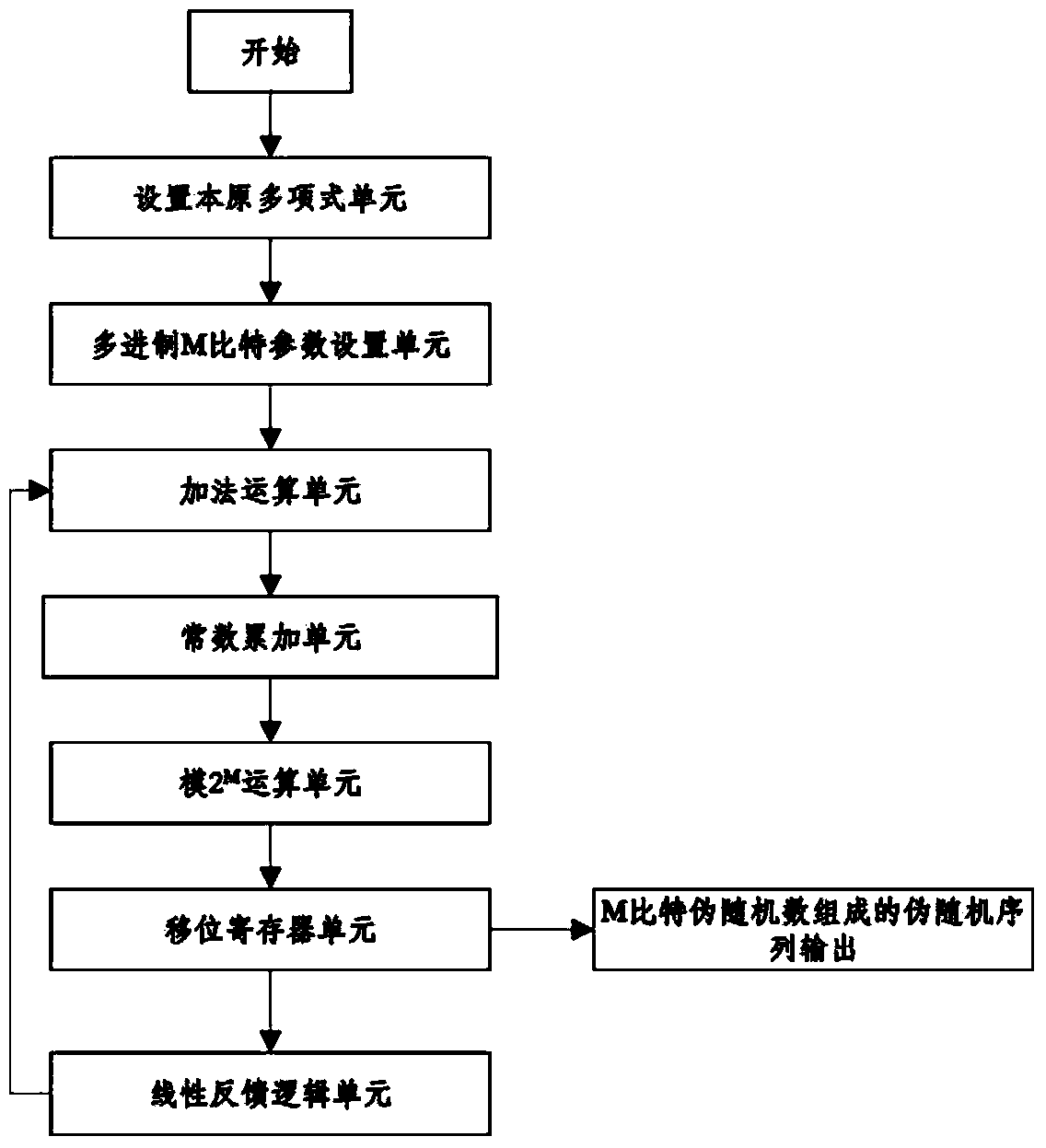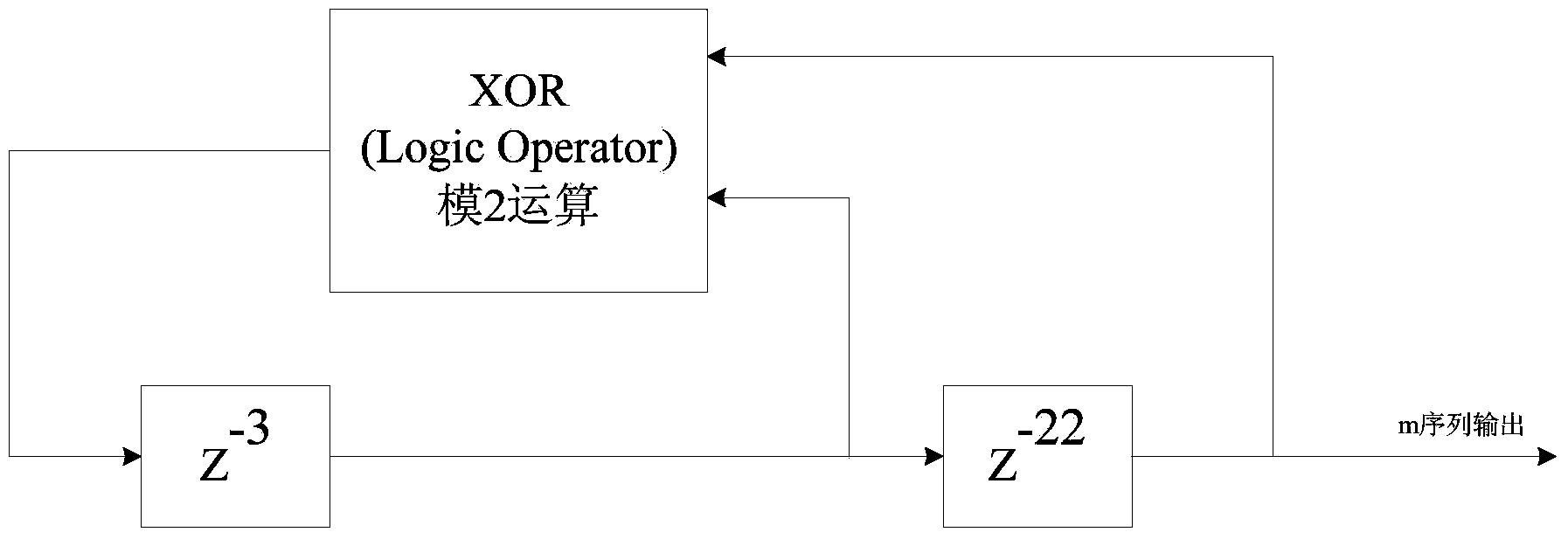M sequence generator-based primitive polynomial pseudo-random sequence generator
A primitive polynomial and pseudo-random sequence technology, applied to random number generators, etc., can solve problems such as limited sequence period, limited periodicity, long period of pseudo-random sequence, etc., and achieve the effect of enhancing security and improving reliability
- Summary
- Abstract
- Description
- Claims
- Application Information
AI Technical Summary
Problems solved by technology
Method used
Image
Examples
Embodiment 1
[0022] Such as image 3 As shown, the existing modulo 2 operation in the m-sequence generator is converted into an addition operation, and modulo 2 is performed when it is fed into the feedback input of the linear shift register M operation, the generation cycle is 2 M-1 (2 N -1) A pseudo-random sequence composed of multi-ary (M-bit) pseudo-random numbers, and the M-bit pseudo-random numbers are in [0,2 M -1] traverse in the interval.
Embodiment 2
[0024] Such as Figure 4 As shown, the m-sequence generator converts the existing modulo 2 operation into an addition operation, and the obtained value is added to an even number G, G∈[0,2 M -1], modulo 2 when fed into the linear shift register feedback input M operation, the generation cycle is 2 M-1 (2 N -1) A pseudo-random sequence composed of multi-ary (M-bit) pseudo-random numbers, which generates 2 according to the value range of G M-1 different pseudo-random sequences, and M-bit pseudo-random numbers in [0,2 M -1] traverse in the interval.
Embodiment 3
[0026] Such as Figure 5 In the m-sequence generator shown, the existing modulo 2 operation is converted into an addition operation, and the obtained value is added to the constant C (C=1), and modulo 2 is performed when it is sent to the feedback input of the linear shift register. M operation, the generation cycle is 2 M-2 (2 N -1) A pseudo-random sequence composed of multi-ary (M-bit) pseudo-random numbers.
PUM
 Login to View More
Login to View More Abstract
Description
Claims
Application Information
 Login to View More
Login to View More - R&D
- Intellectual Property
- Life Sciences
- Materials
- Tech Scout
- Unparalleled Data Quality
- Higher Quality Content
- 60% Fewer Hallucinations
Browse by: Latest US Patents, China's latest patents, Technical Efficacy Thesaurus, Application Domain, Technology Topic, Popular Technical Reports.
© 2025 PatSnap. All rights reserved.Legal|Privacy policy|Modern Slavery Act Transparency Statement|Sitemap|About US| Contact US: help@patsnap.com



